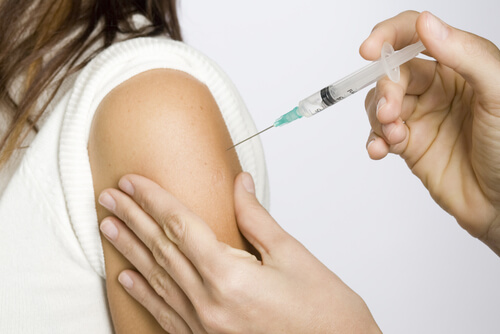
Dead vaccine: protection from the test tube
A cold shot, the needle, the plaster – what for some lasts only a few seconds, for others becomes a virtual eternity.
.Nevertheless, most of us are driven to the GP when the vaccination book sounds the alarm. But what actually is a vaccination? How does immunisation work? What is so special about an inactivated vaccine and what should you do if you have missed a vaccination?
Vaccination is not a vaccine.
Vaccination: the history The term „Vaccination“ or also „Vaccination“ dates back to the 18th century. At that time, smallpox was rampant in Europe and people were dying in rows. Babies in particular fall victim to the deadly rash with high fever. After much agony and misery, the turnaround finally succeeds! The British doctor Edward Jenner showed courage and infected a boy with cowpox. Today a criminal offence and unthinkable. But the idea behind it is ingenious: the immunisation of the human body against pathogens.
The doctor carves the viruses under the boy's skin – injections do not exist at this time – and makes a spectacular observation. The boy develops an immunisation against human smallpox. With this, Jenner achieves a milestone in medicine. He named his active ingredient after the Latin word for cow (vacca) „Vaccine“ and thus laid the foundation for üover 200 years of continuing research in this field.
Totoxicity.
Vaccination: when pathogens protect Today we distinguish between dead, live, mRNA and vector vaccines. The latter two contain blueprints for the production of special proteins, the others real pathogens. But they all have one thing in common: they train our immune system to deal with emergencies.
In the case of the dead vaccine, the injected liquid contains pathogens that have been killed and are no longer able to reproduce. This usually happens through physical or chemical processes that render the pathogens harmless. With the prick, a dosed amount of these pathogens then enters our organism via the contents of the syringe. From this moment on, our immune system is on the alert and prepares itself for the fight against the aliens.
How does immunisation work? These defence cells fight the invading viruses, bacteria, germs or fungi. Sometimes with ease, sometimes with a considerable feat of strength. This gives rise to antibodies. If the body and the pathogen meet again, the immune system remembers the pests thanks to our so-called immunological memory. It recognises them and wrestles them down with the help of its little helpers. The family of inactivated vaccines includes vaccines against the following diseases: Don't forget to brush up Since inactivated vaccines can break down quickly, a booster is often recommended. This is usually done at regular intervals and serves to accelerate the immune response.
In the case of tetanus vaccination the first vaccination is given at the age of 2 months. When the child reaches 4 months of age, the second vaccination is given. At the age of 11 months, it is time for the third vaccination dose, before the vaccination is repeated at pre-school age. After that, the tetanus vaccination takes us to the family doctor every 10 years.
Lifelong immunisation with live vaccines
The process is almost identical to that of a natural immunisation: Every day our immune system does valuable work to protect us from all possible pathogens. Cilia, saliva, tear fluid, bronchial mucus or even our skin keep many pathogens away at first. However, if the foreign substances get deeper into our body, special defence cells stand in their way.
After administration of an inactivated vaccine, nothing else happens than the controlled sequence of this natural immunisation – only with dead pathogens that come out of the syringe. They are used to protect against diseases that the body is not able to cope with.
Unlike inactivated vaccines, live vaccines
A comparison of dead and live vaccines
.Whereas the dead vaccine loses its effect relatively quickly, the protection of the live vaccine usually lasts for life. An absolute disadvantage compared to the dead vaccination, however, is its incompatibility for immunocompromised persons. Immune deficiencies can cause the live pathogens to spread more strongly and potentially harm patients at risk.
Vaccination is not suitable for people with immune deficiencies.
Vaccination versäumt? Passive immunisation With a passive immunisation in the form of an antiserum diseases can still be controlled and treated. The serum itself consists of the blood fluid of vaccinated humans or mammals. The injected antibodies immediately put themselves in the path of the pathogens. In this way, diseases such as diphtheria, hepatitis A and B, measles, rhinitis and tetanus can be combated without vaccination. Healing the immune system is not a question of vaccination.
Hotly debated Vaccination has been a source of controversy since its inception. Fear and many opinions prevail among the population. Science argues that they are important tools to protect humans against disease. But the focus is not only on our own health. The well-being of our fellow human beings and the containment of diseases also play an important role in the use of vaccines.
The fact is: A functioning immune system is the key to a healthy life. Vaccinations can help to prepare the immune system for emergencies. But they are certainly not a panacea for a vital lifestyle. A balanced diet and sufficient exercise are at least as important for a powerful immune system. In addition, you can make a further contribution to supporting your immune system with vitamins and minerals.
If we fail to vaccinate against certain diseases, there are still ways to avert harm if we are infected.
